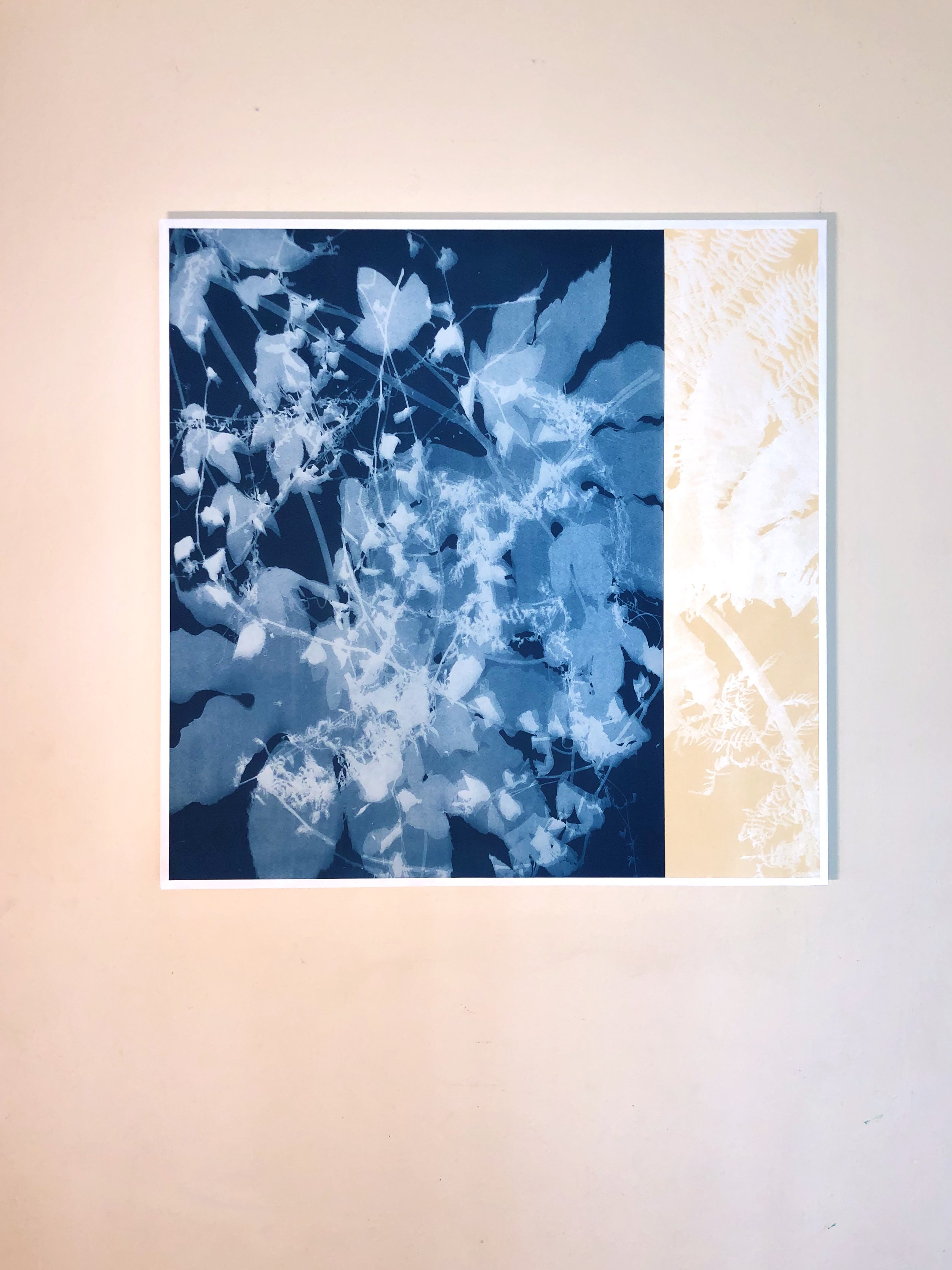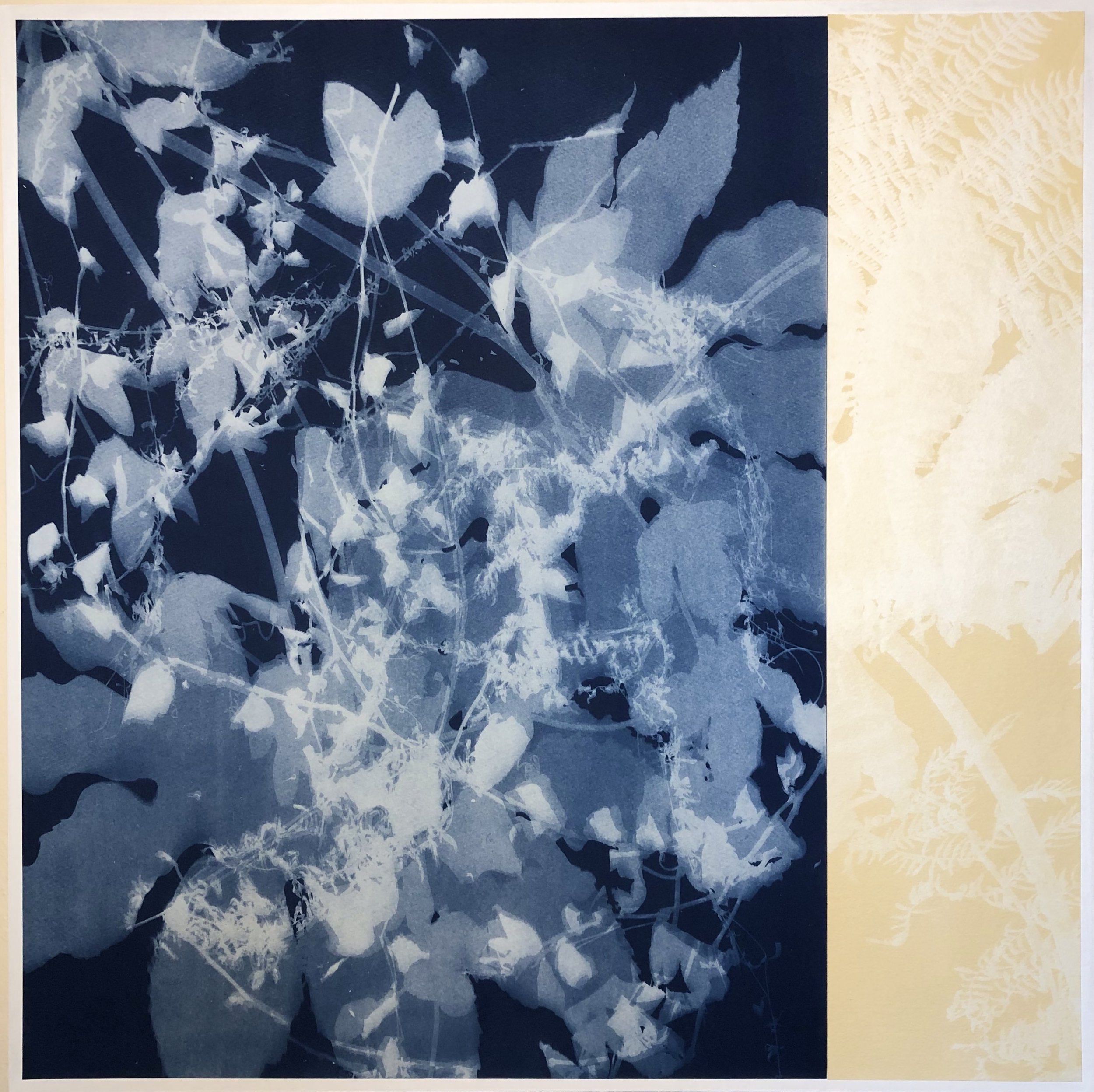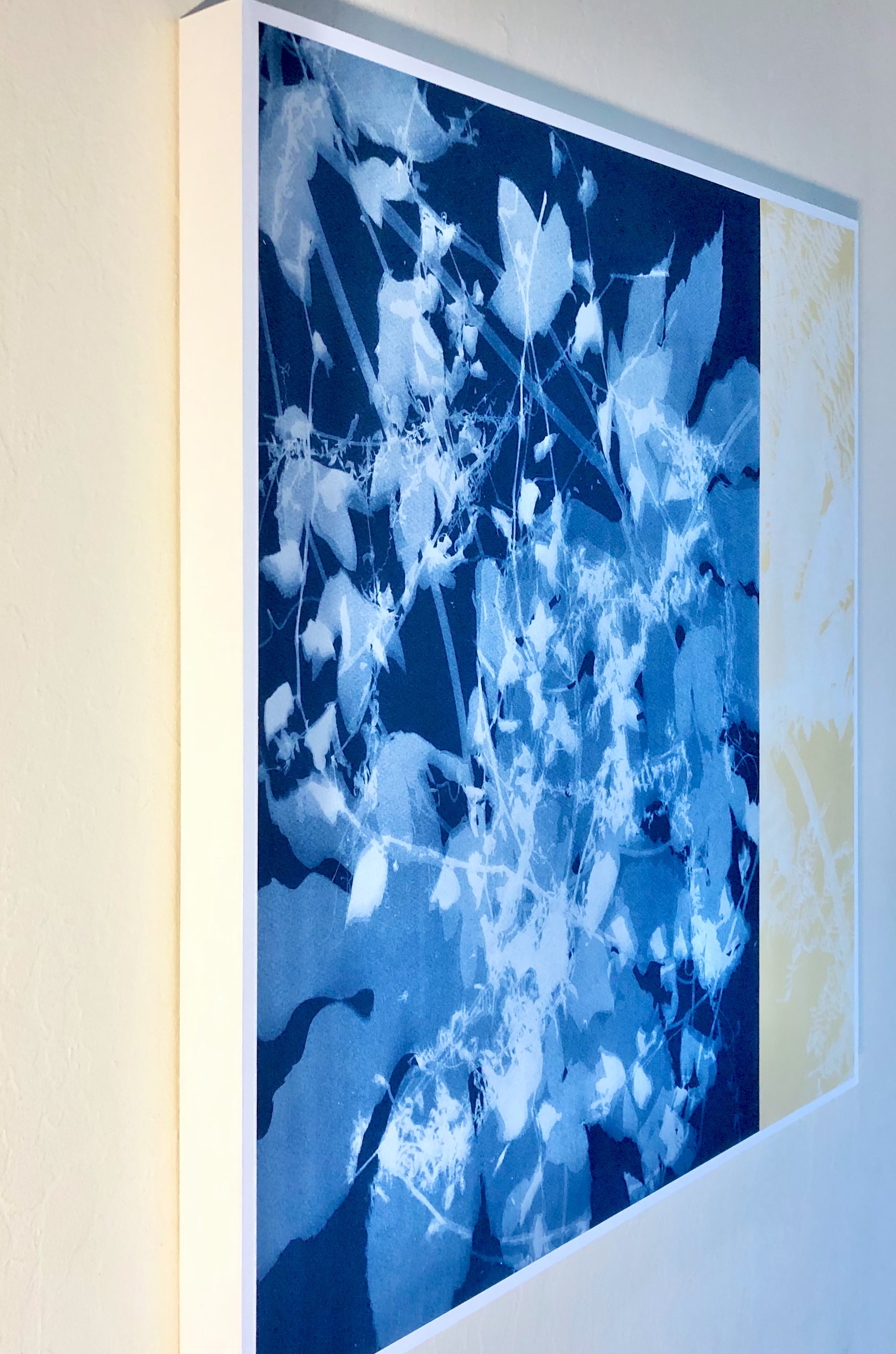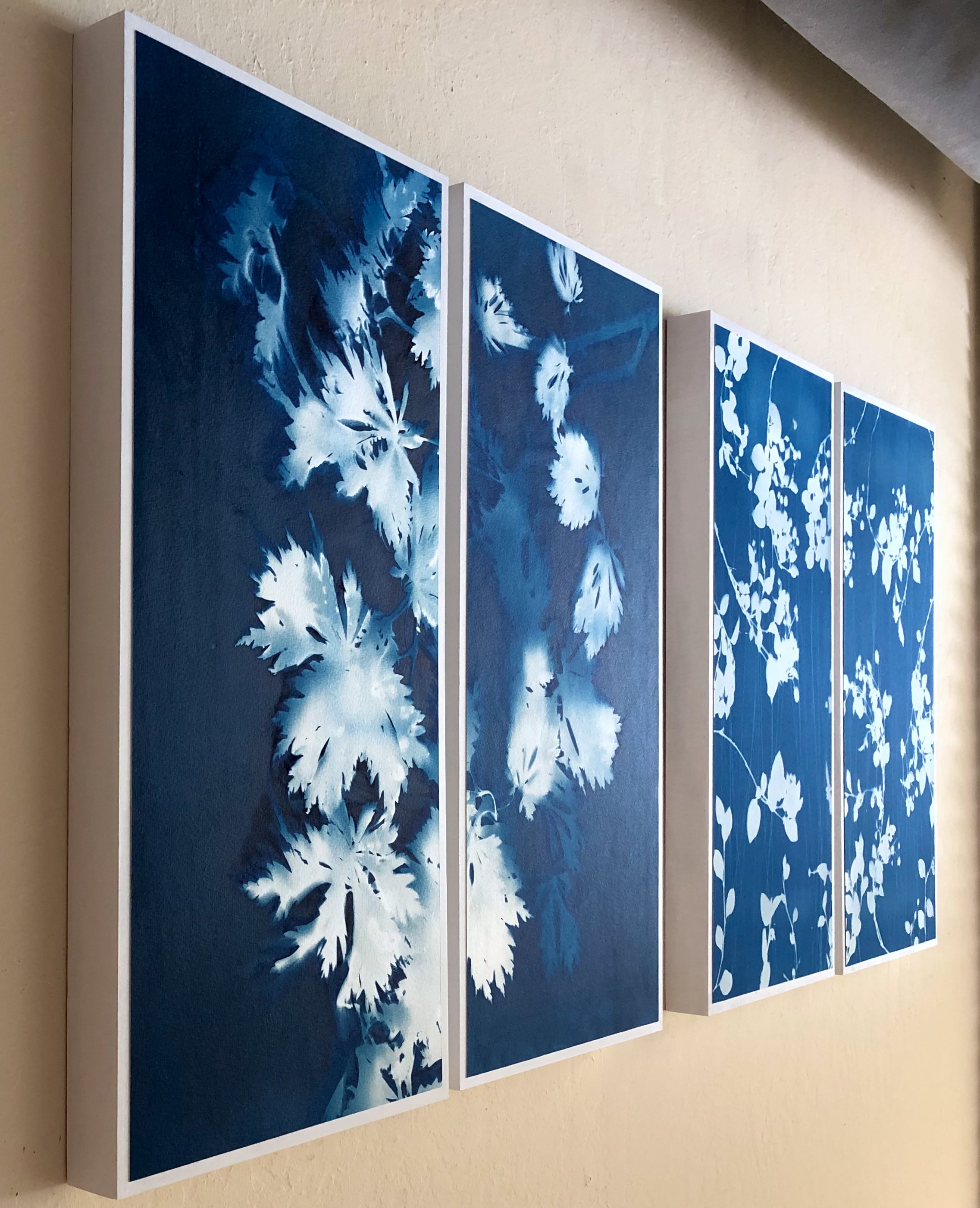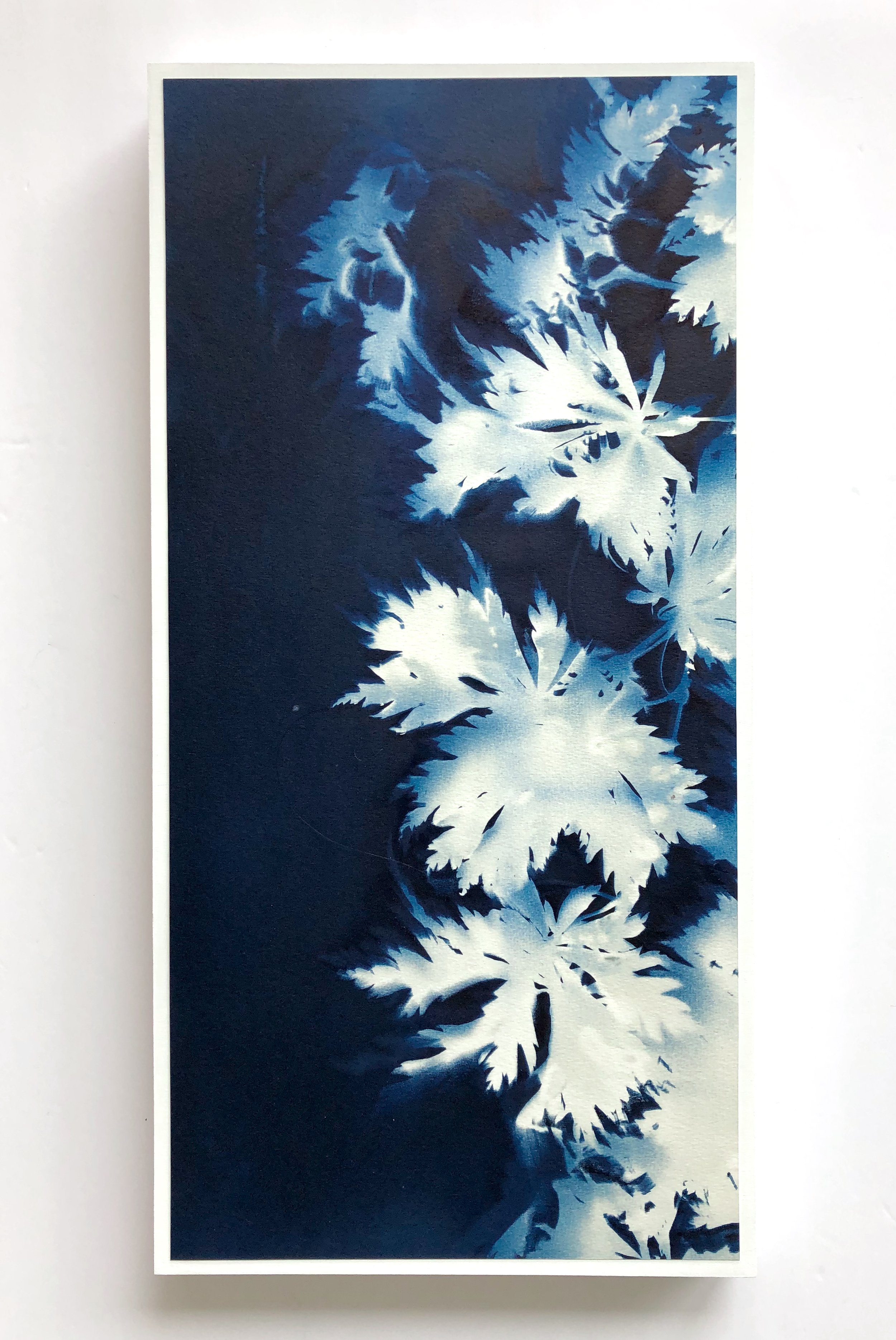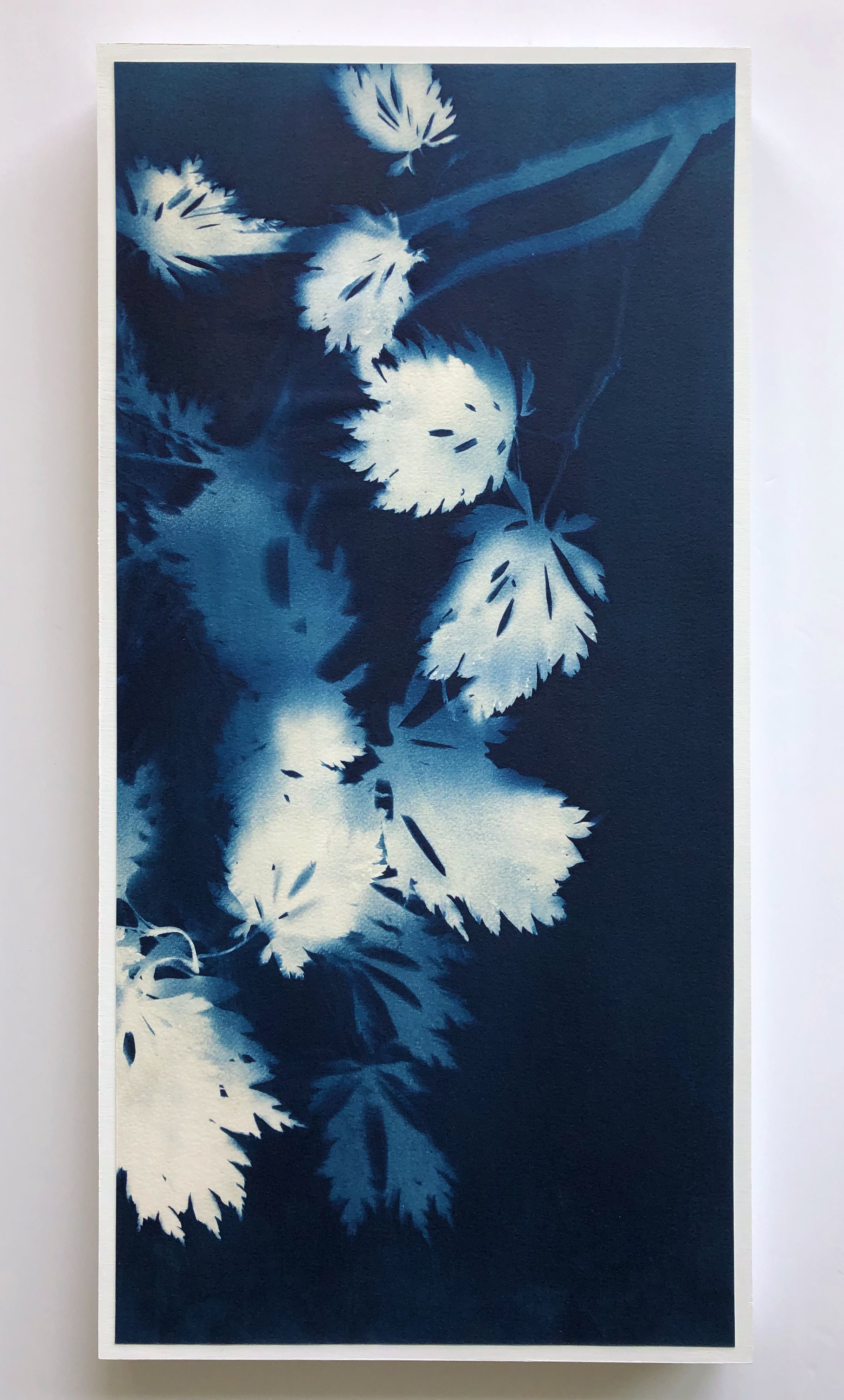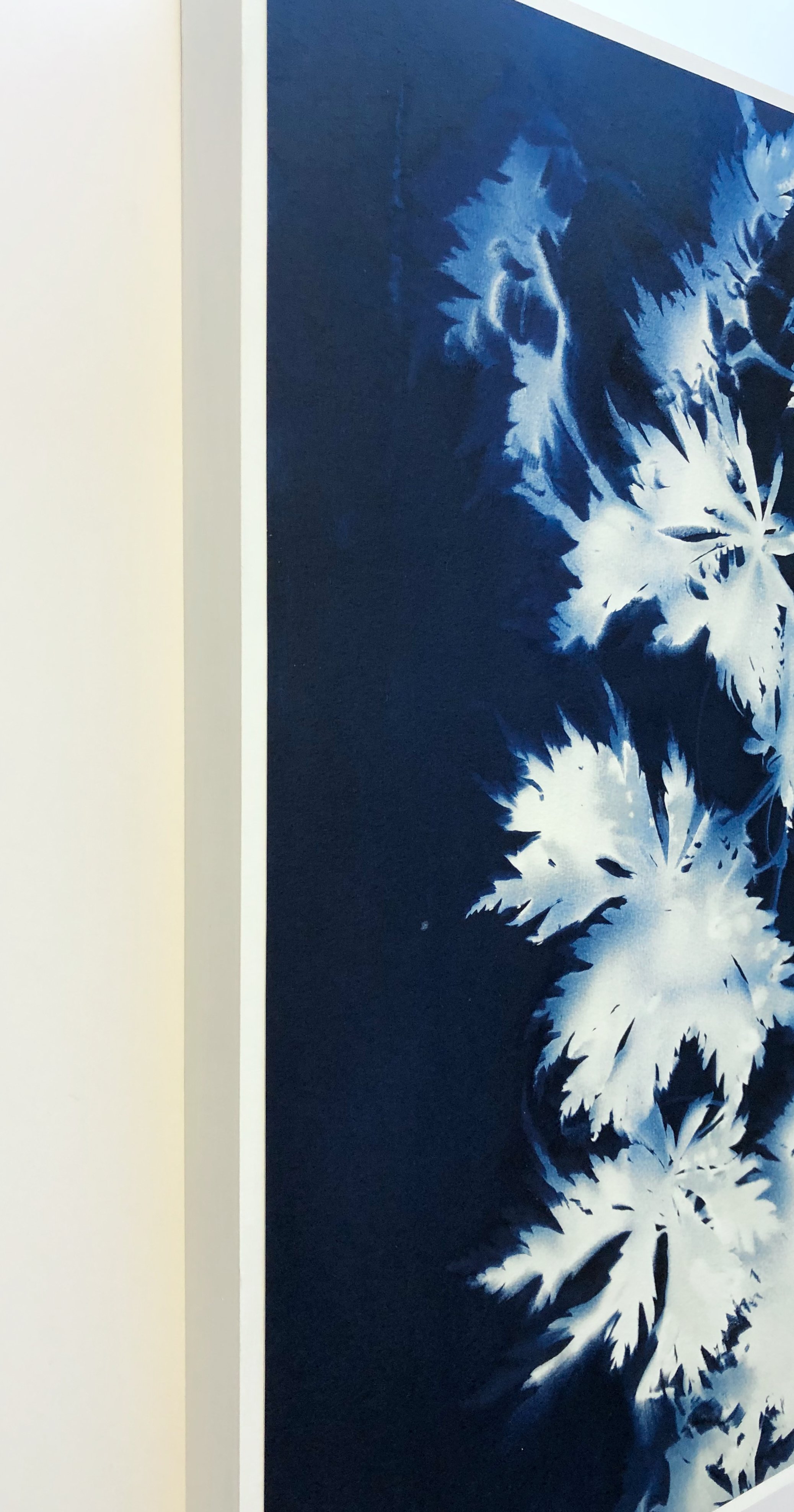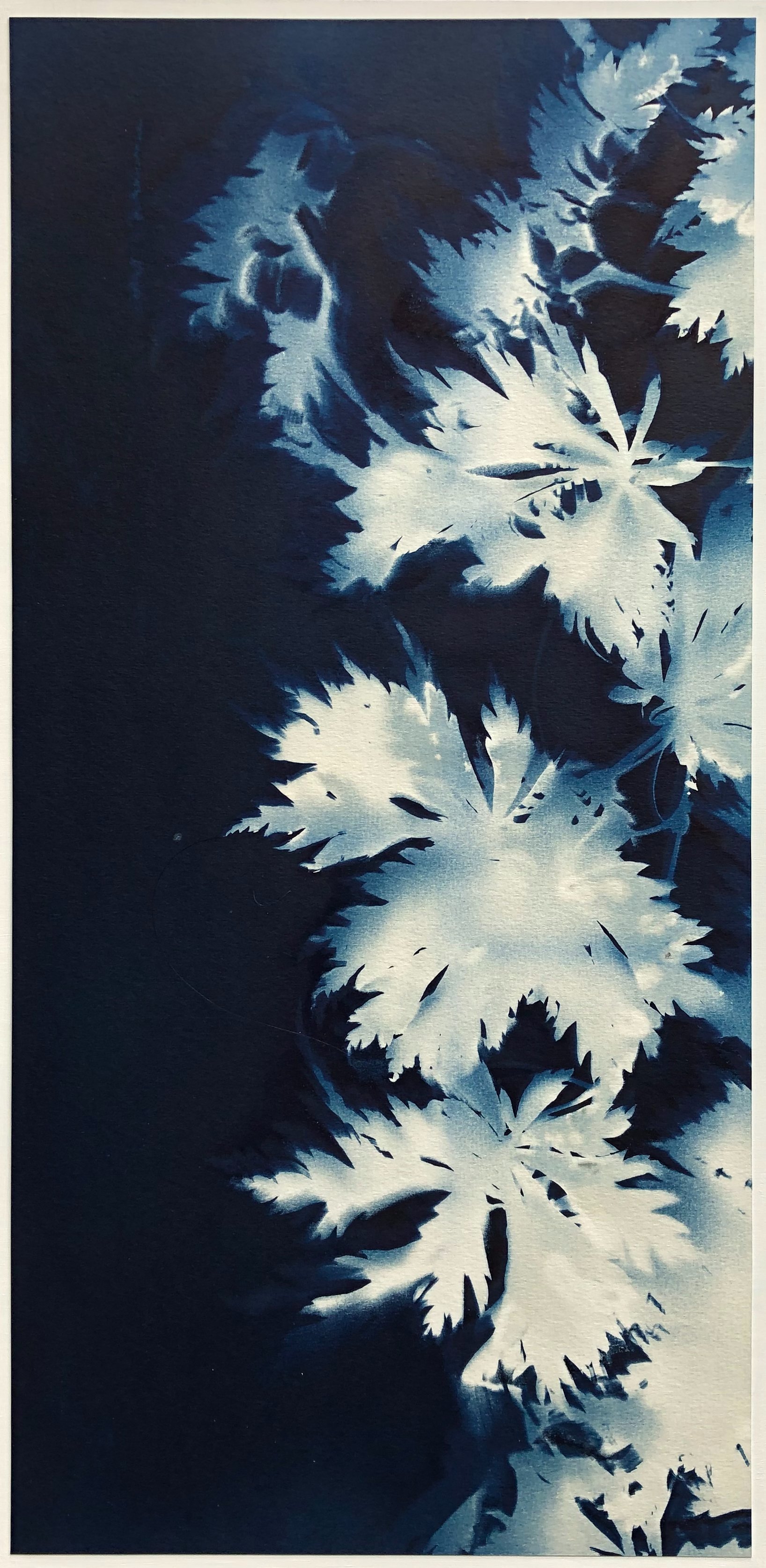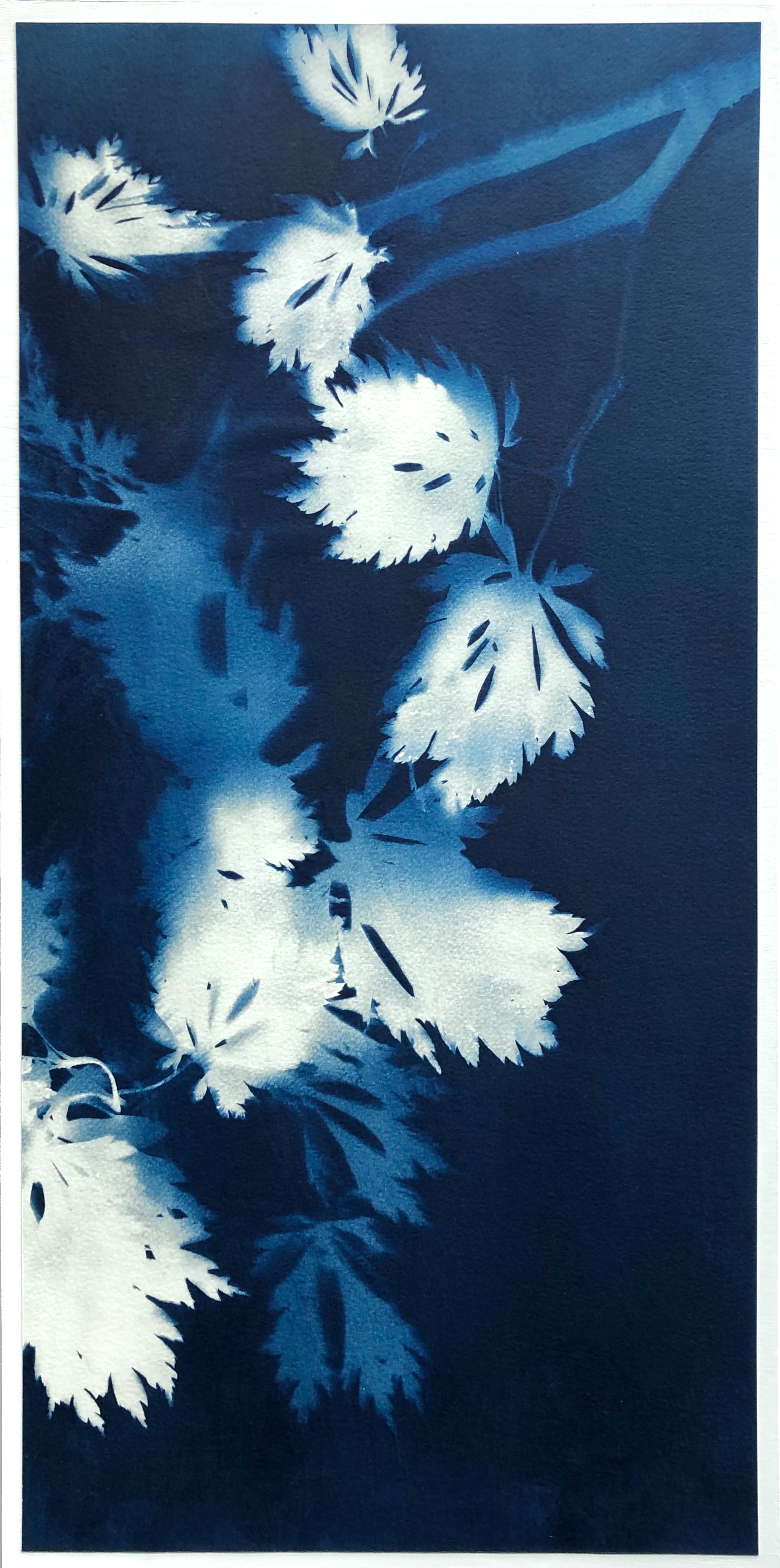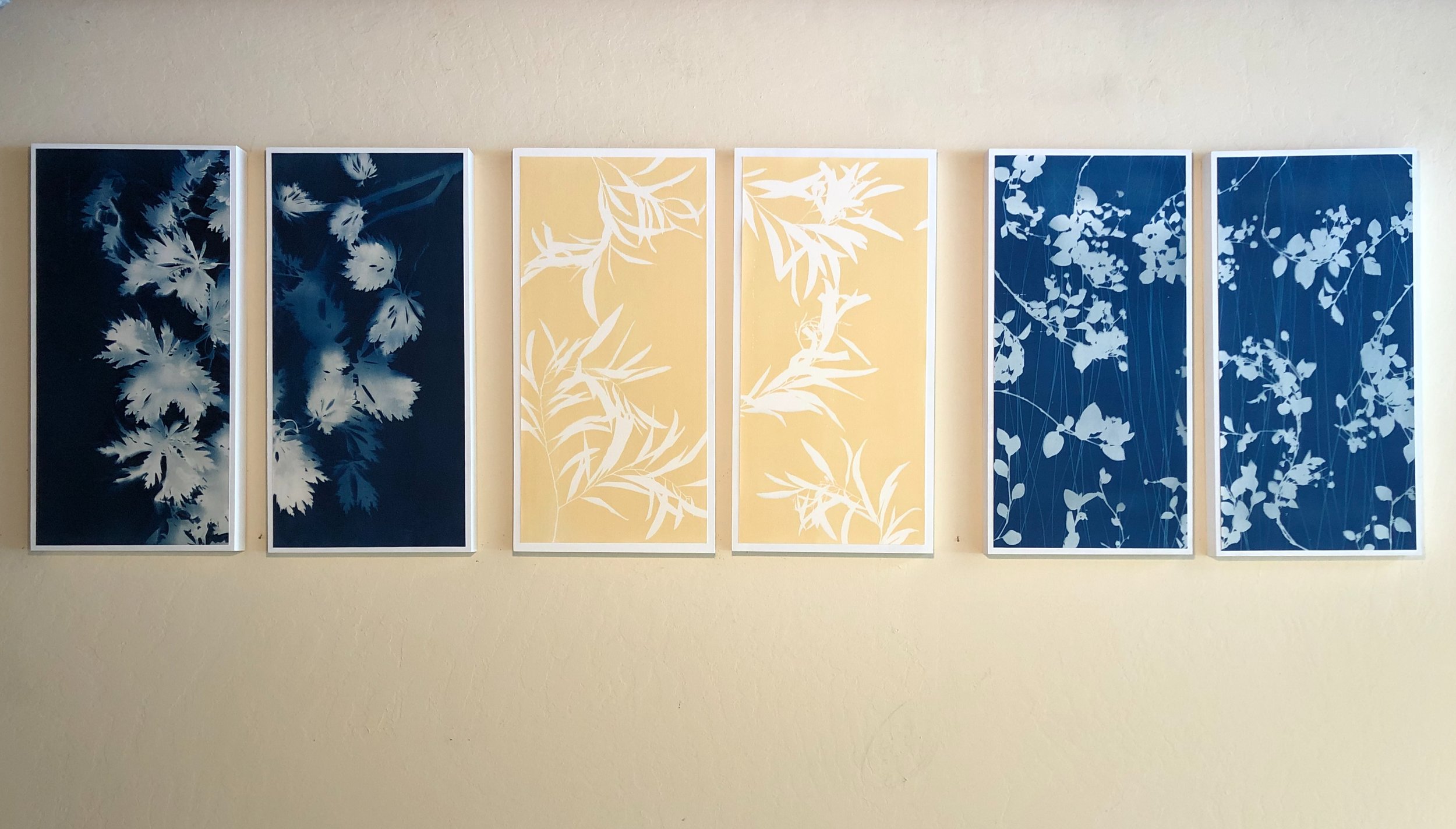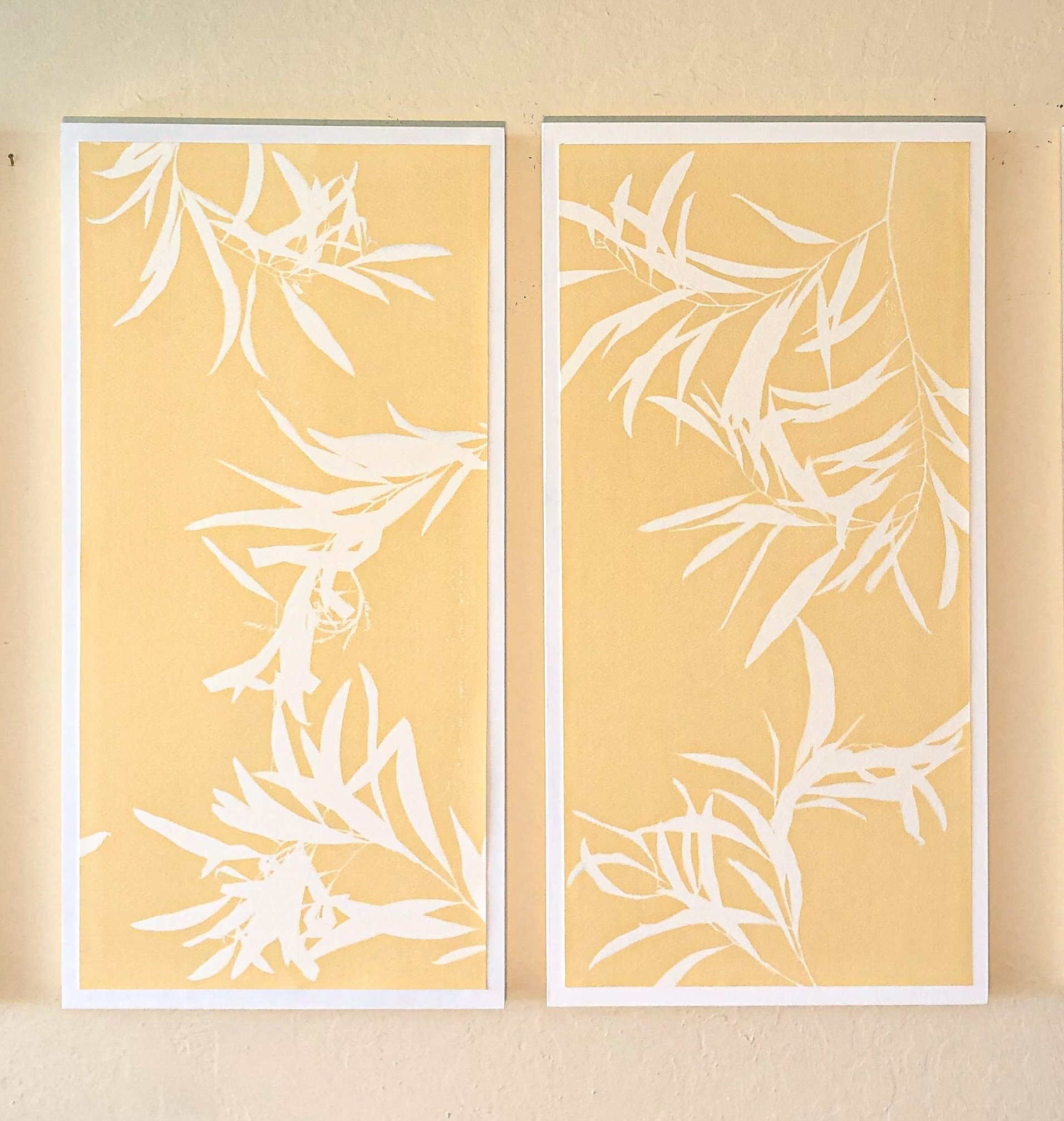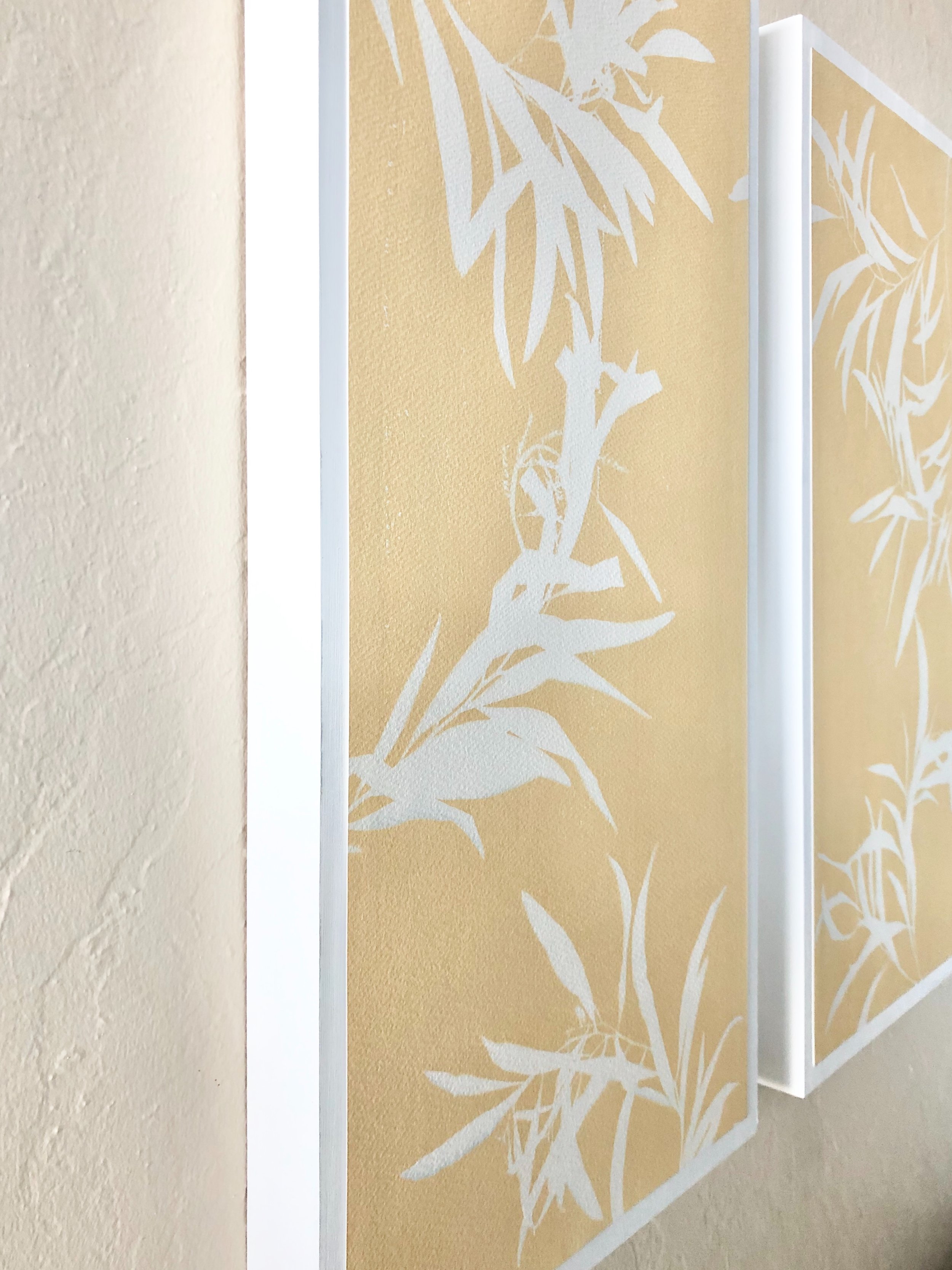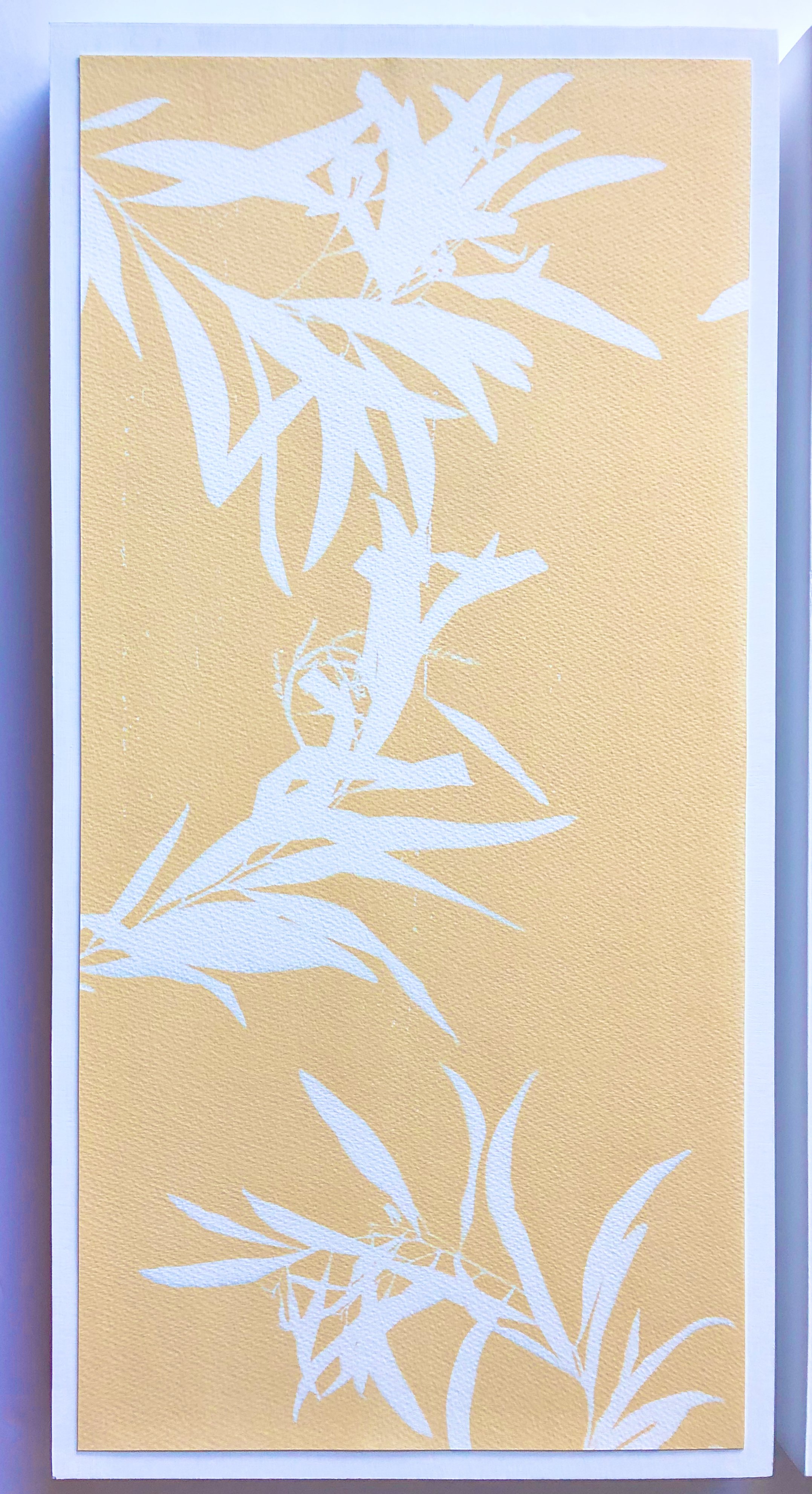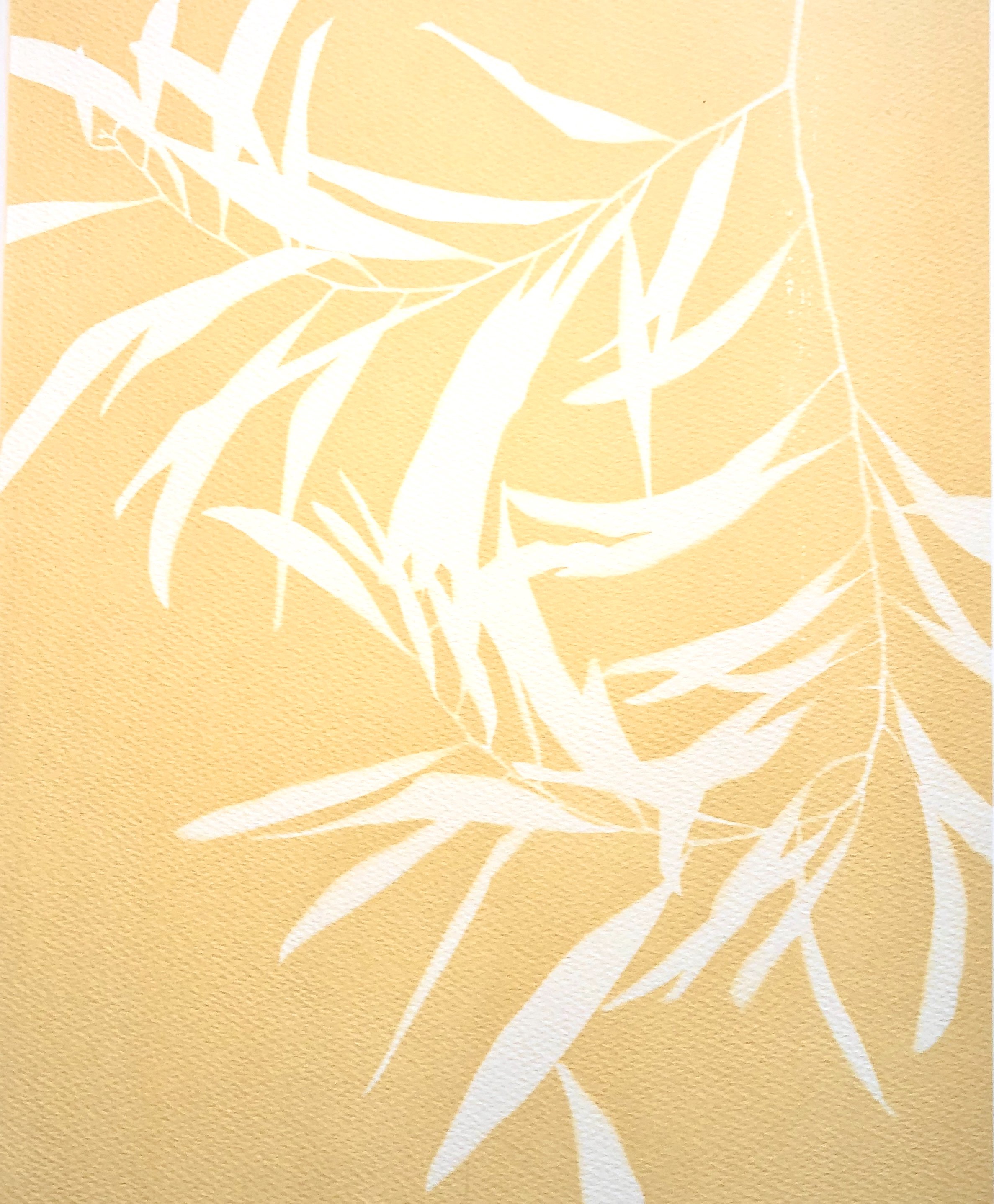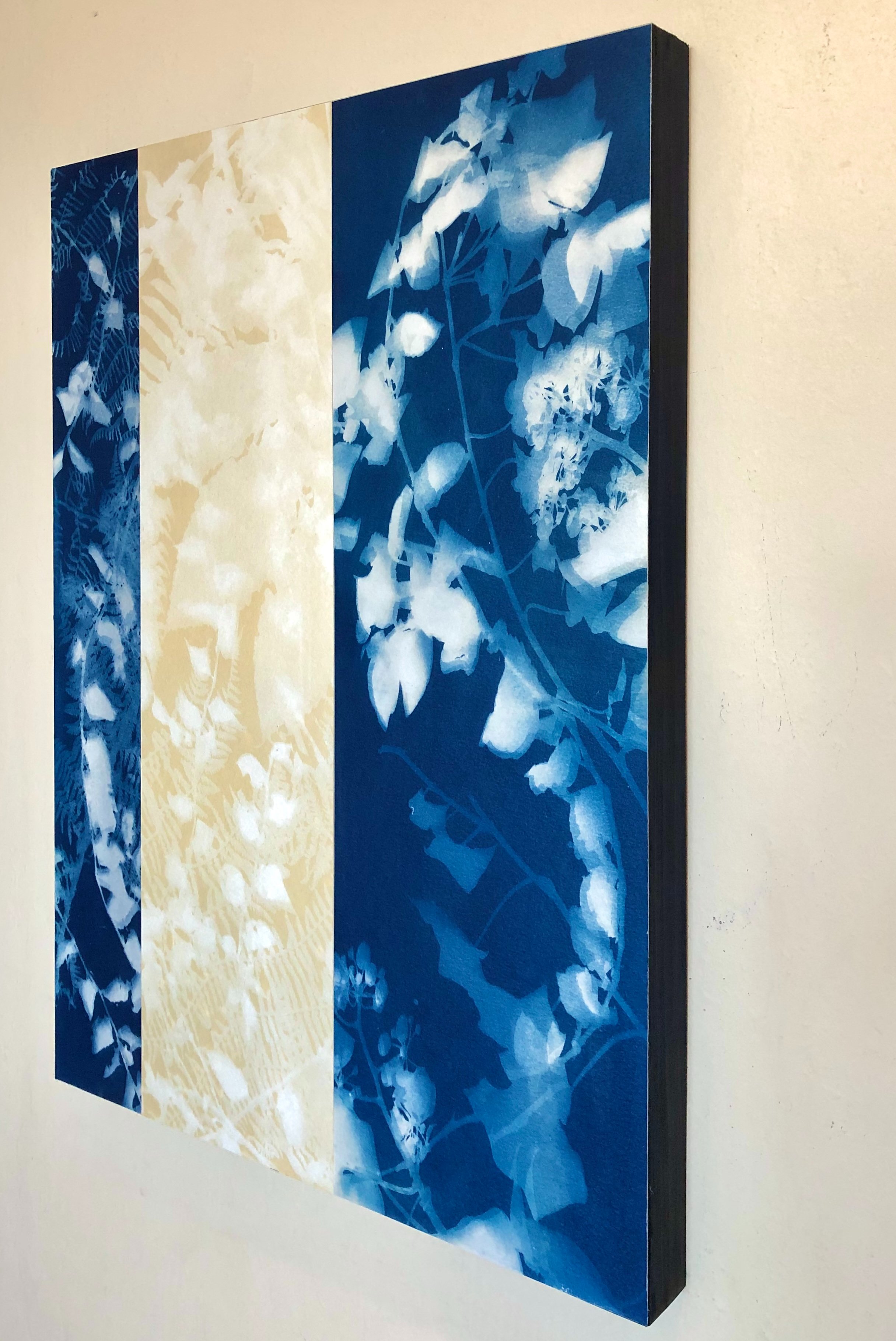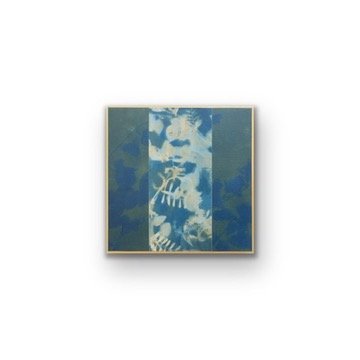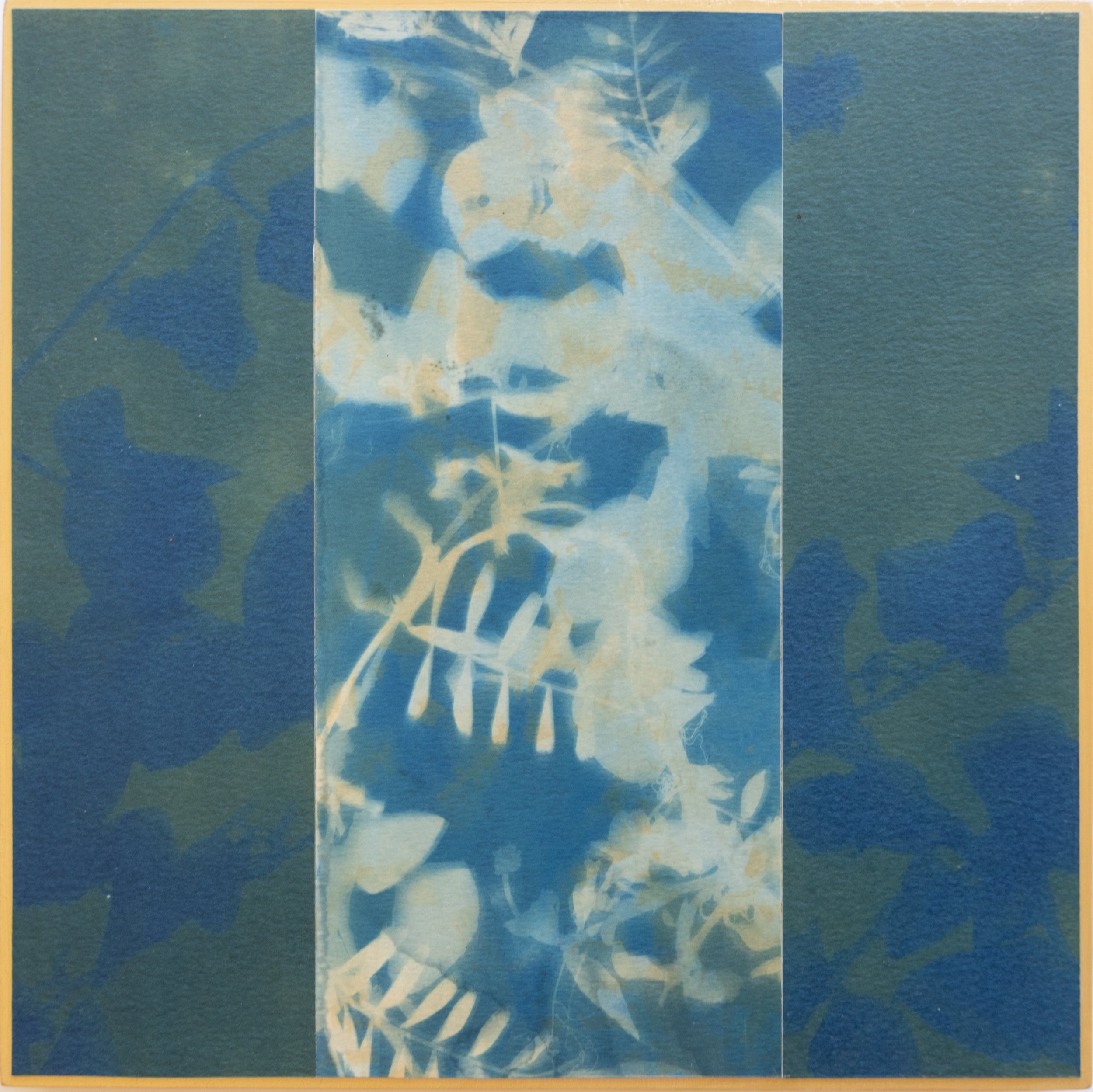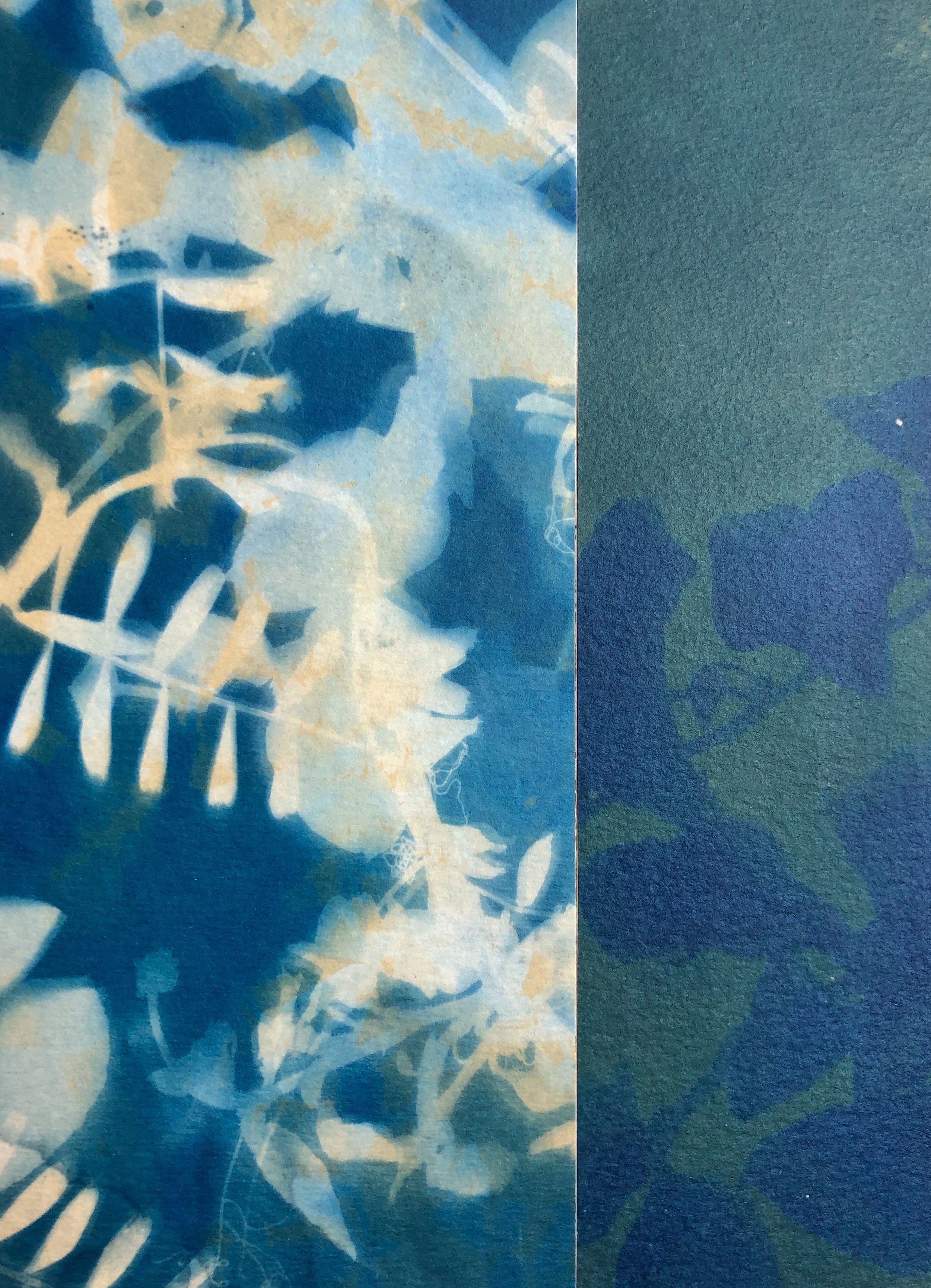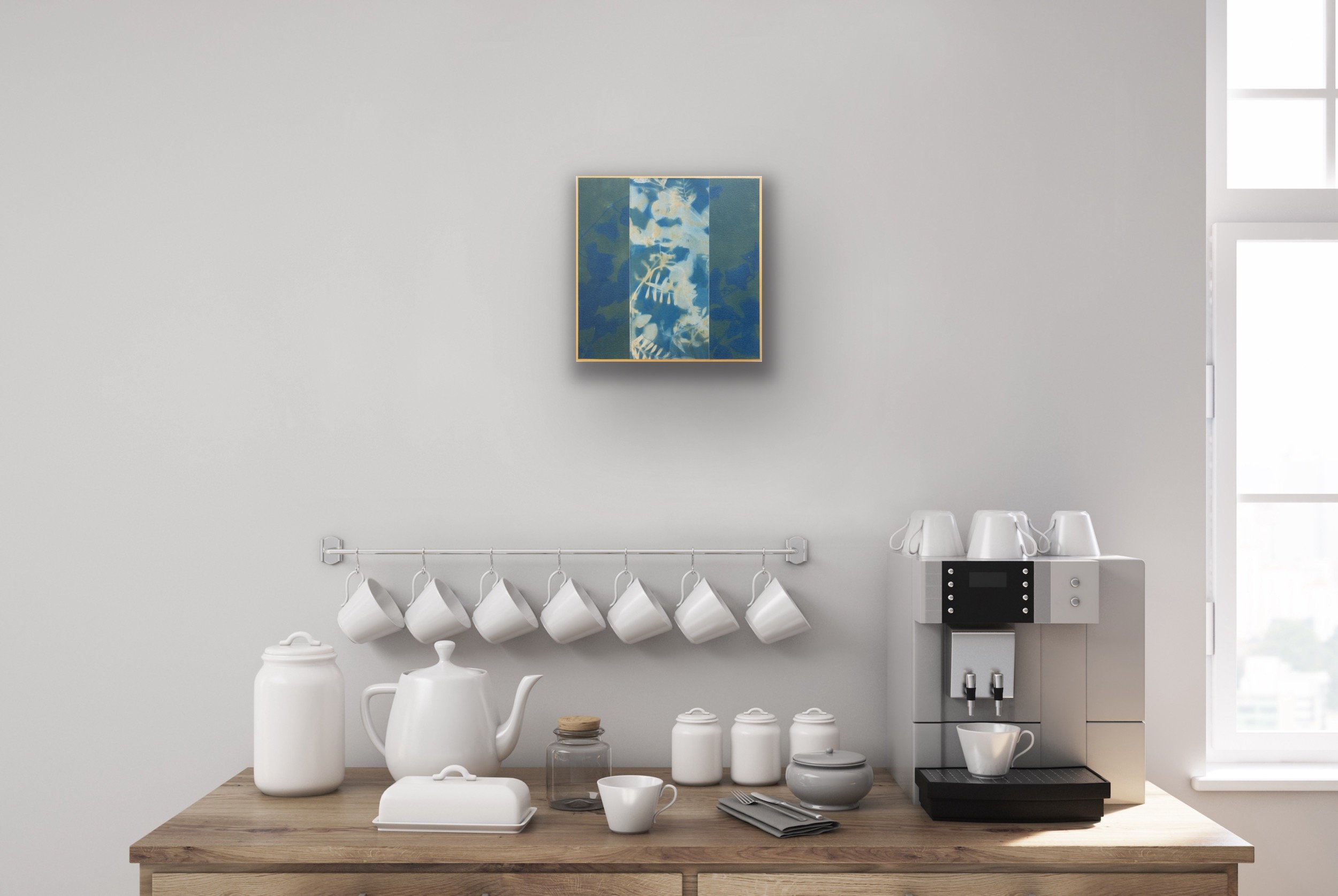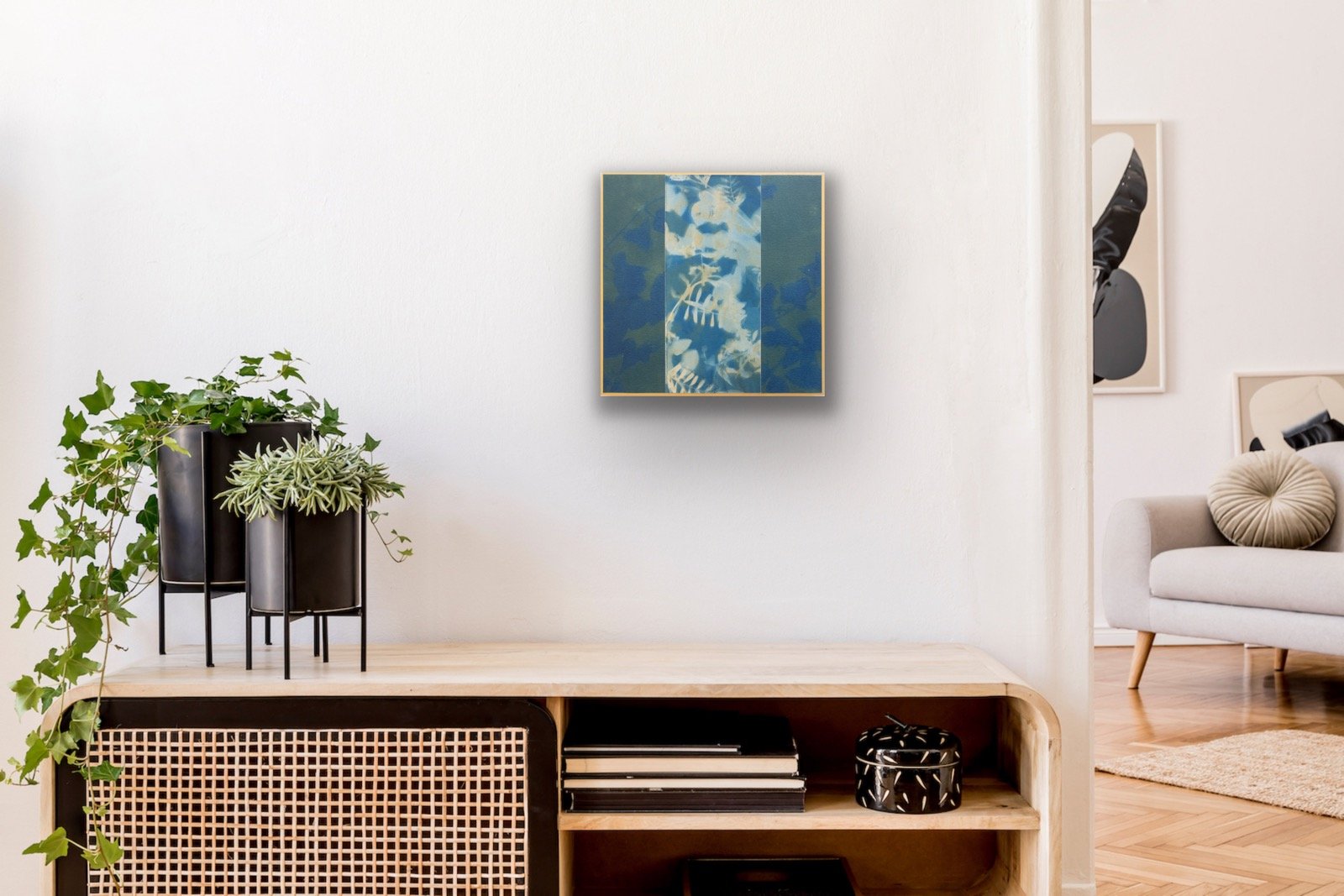Change Is the Only Constant (24 x 24 x 1.5 inch collage of original cyanotypes on wood panel)
This is the fifth and the largest in my 'Night and Day' series of collages mounted on wood panels. Each is made using entirely unique hand-printed cyanotypes. These are not etchings made from a reproducible image inscribed on a metal plate or carved in a block. My botanical cyanotypes made with living plants are all monoprints.
In this collage on wood panel, the colors of night and day, the good and the bad are united in one image, a reminder that day always follows even the darkest night. I took care to match the shapes and the flow of two prints of the same plant from my garden, Fatsia Japonica with its 9-pointed leaves. The yellow side is the alter ego of the blue night side. The stems of the giant leaves bend toward each other in an endless circular flow.
I used a quadruple-exposure blue print and a yellow toned cyanotype of the same species of leaves aligned in such a way that it looks like the branches continue across the color divide.
Each of the cyanotypes that was cut up to assemble one of my collages was a unique monotype made from plants in my own garden. Cyanotypes, also known as blueprints or sun prints, are a 19th century alternative photographic process which does not require a camera lens.
There is a 3/8 inch (1 1/4 cm) border of white painted wood showing around the image when viewed from the front and the four sides of the 1 1/2 inch (3 3/4 cm) deep birch cradled panel are painted white. This eliminates the need for a frame.
There is a wire on the back making it ready to hang immediately. The papers used in the collage are heavy 100% acid-free watercolor paper which will not yellow with age. The paper's surface is sealed with a transparent, matte layer of cold wax to protect it.
About “toning”: The yellow cyanotype print began as a blue cyanotype and was turned yellow through a process called "toning." After being printed and rinsed, a blue print was soaked in detergent to turn it a warm shade of butter yellow and then rinsed again and dried again.
The toning process adds two more days to the time it takes to make these prints and the toning itself has a high failure rate. There can be a small blue area that refuses to turn yellow, remaining a greyish mid-transformation color and spoiling the print. Because of this, the price is higher for my yellow cyanotypes than the normal blue. The thick watercolor paper is mounted on wooden panels with their 1.5 inch deep sides painted white as well as the front edge, which serves as a frame. Each panel individually measures 12 x 24 x 1.5 inches (30 x 60 x 4 cm). These two mounted prints on panels can be hung close together or spaced apart in a hallway or staircase.
The paper is sealed with a very thin coat of rubbed-on cold wax medium. This matte barely perceptible layer protects the paper against dirt, dust and moisture, but does not have the noticeable thick, shiny, glassy look of an encaustic finish.
This is the fifth and the largest in my 'Night and Day' series of collages mounted on wood panels. Each is made using entirely unique hand-printed cyanotypes. These are not etchings made from a reproducible image inscribed on a metal plate or carved in a block. My botanical cyanotypes made with living plants are all monoprints.
In this collage on wood panel, the colors of night and day, the good and the bad are united in one image, a reminder that day always follows even the darkest night. I took care to match the shapes and the flow of two prints of the same plant from my garden, Fatsia Japonica with its 9-pointed leaves. The yellow side is the alter ego of the blue night side. The stems of the giant leaves bend toward each other in an endless circular flow.
I used a quadruple-exposure blue print and a yellow toned cyanotype of the same species of leaves aligned in such a way that it looks like the branches continue across the color divide.
Each of the cyanotypes that was cut up to assemble one of my collages was a unique monotype made from plants in my own garden. Cyanotypes, also known as blueprints or sun prints, are a 19th century alternative photographic process which does not require a camera lens.
There is a 3/8 inch (1 1/4 cm) border of white painted wood showing around the image when viewed from the front and the four sides of the 1 1/2 inch (3 3/4 cm) deep birch cradled panel are painted white. This eliminates the need for a frame.
There is a wire on the back making it ready to hang immediately. The papers used in the collage are heavy 100% acid-free watercolor paper which will not yellow with age. The paper's surface is sealed with a transparent, matte layer of cold wax to protect it.
About “toning”: The yellow cyanotype print began as a blue cyanotype and was turned yellow through a process called "toning." After being printed and rinsed, a blue print was soaked in detergent to turn it a warm shade of butter yellow and then rinsed again and dried again.
The toning process adds two more days to the time it takes to make these prints and the toning itself has a high failure rate. There can be a small blue area that refuses to turn yellow, remaining a greyish mid-transformation color and spoiling the print. Because of this, the price is higher for my yellow cyanotypes than the normal blue. The thick watercolor paper is mounted on wooden panels with their 1.5 inch deep sides painted white as well as the front edge, which serves as a frame. Each panel individually measures 12 x 24 x 1.5 inches (30 x 60 x 4 cm). These two mounted prints on panels can be hung close together or spaced apart in a hallway or staircase.
The paper is sealed with a very thin coat of rubbed-on cold wax medium. This matte barely perceptible layer protects the paper against dirt, dust and moisture, but does not have the noticeable thick, shiny, glassy look of an encaustic finish.
This is the fifth and the largest in my 'Night and Day' series of collages mounted on wood panels. Each is made using entirely unique hand-printed cyanotypes. These are not etchings made from a reproducible image inscribed on a metal plate or carved in a block. My botanical cyanotypes made with living plants are all monoprints.
In this collage on wood panel, the colors of night and day, the good and the bad are united in one image, a reminder that day always follows even the darkest night. I took care to match the shapes and the flow of two prints of the same plant from my garden, Fatsia Japonica with its 9-pointed leaves. The yellow side is the alter ego of the blue night side. The stems of the giant leaves bend toward each other in an endless circular flow.
I used a quadruple-exposure blue print and a yellow toned cyanotype of the same species of leaves aligned in such a way that it looks like the branches continue across the color divide.
Each of the cyanotypes that was cut up to assemble one of my collages was a unique monotype made from plants in my own garden. Cyanotypes, also known as blueprints or sun prints, are a 19th century alternative photographic process which does not require a camera lens.
There is a 3/8 inch (1 1/4 cm) border of white painted wood showing around the image when viewed from the front and the four sides of the 1 1/2 inch (3 3/4 cm) deep birch cradled panel are painted white. This eliminates the need for a frame.
There is a wire on the back making it ready to hang immediately. The papers used in the collage are heavy 100% acid-free watercolor paper which will not yellow with age. The paper's surface is sealed with a transparent, matte layer of cold wax to protect it.
About “toning”: The yellow cyanotype print began as a blue cyanotype and was turned yellow through a process called "toning." After being printed and rinsed, a blue print was soaked in detergent to turn it a warm shade of butter yellow and then rinsed again and dried again.
The toning process adds two more days to the time it takes to make these prints and the toning itself has a high failure rate. There can be a small blue area that refuses to turn yellow, remaining a greyish mid-transformation color and spoiling the print. Because of this, the price is higher for my yellow cyanotypes than the normal blue. The thick watercolor paper is mounted on wooden panels with their 1.5 inch deep sides painted white as well as the front edge, which serves as a frame. Each panel individually measures 12 x 24 x 1.5 inches (30 x 60 x 4 cm). These two mounted prints on panels can be hung close together or spaced apart in a hallway or staircase.
The paper is sealed with a very thin coat of rubbed-on cold wax medium. This matte barely perceptible layer protects the paper against dirt, dust and moisture, but does not have the noticeable thick, shiny, glassy look of an encaustic finish.
